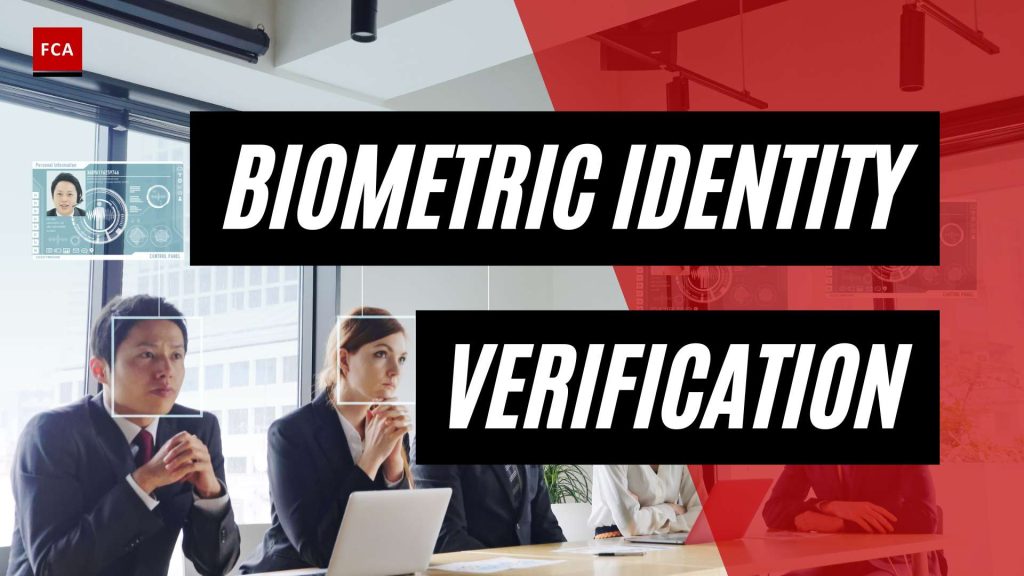Biometric Identity Verification: Enhancing Security and User Experience
Biometric identity verification is a rapidly evolving technology that is revolutionizing various industries and enhancing user experiences. By leveraging unique biological characteristics, biometric technology provides a secure and convenient method of authentication. In this section, we will explore the role of biometric technology in various industries, the advantages of biometric authentication, and the different types of biometric authentication methods.
The Role of Biometric Technology in Various Industries
Biometric technology has found its application in a wide range of industries, transforming the way organizations secure sensitive information and assets. In the banking and financial services industry, biometric identity verification plays a crucial role in ensuring secure transactions and user authentication. By implementing biometric authentication systems, financial institutions can provide a frictionless experience for customers while enhancing security. Biometric authentication also enables the implementation of robust anti-fraud measures, such as biometric transaction monitoring and biometric watchlist screening, to protect against financial crimes.
In the healthcare industry, biometric identity verification has the potential to enhance patient identification, reduce medical errors, and improve data security. By implementing biometric solutions, medical facilities can ensure accurate patient identification, leading to better patient care and regulatory compliance within the sector. Additionally, biometric authentication can safeguard electronic health records and protect sensitive patient information from unauthorized access.
Retail businesses are also embracing biometric identity verification for customer verification, employee authentication, and fraud prevention. Biometric authentication methods, such as fingerprint scans or facial recognition, can be used for contactless payments, enhancing the convenience and security of transactions. By adopting biometric verification technologies, retailers can streamline operations, reduce fraud, and provide a seamless customer experience (Aware).
Government agencies are turning to biometric identity verification to strengthen security and efficiency for citizens and employees. Biometric authentication provides a more secure and reliable method of authentication compared to traditional methods like passwords and PINs. By implementing biometric solutions, government agencies can enhance identity verification for government services, border control, and employee access control (Aware).
Advantages of Biometric Authentication
Biometric authentication offers several advantages over traditional authentication methods. One significant advantage is its high level of security. Biometric data, such as fingerprints, iris patterns, or facial features, is unique to each individual, making it difficult to replicate or forge. This uniqueness significantly reduces the likelihood of unauthorized access to sensitive information (Alice Biometrics). Biometric authentication systems also offer increased convenience to users by eliminating the need to remember and manage multiple passwords or PINs for different accounts. Users only need to rely on their unique biometric traits for authentication, simplifying the authentication process and reducing the risk of password-related issues (Alice Biometrics).
Another advantage of biometric authentication is its resistance to common security breaches like phishing attacks, keylogging, and brute force password cracking. Biometric data cannot easily be stolen or intercepted during transmission, enhancing overall security levels (Alice Biometrics). Additionally, biometric authentication methods, such as fingerprint or facial recognition, offer a higher level of accuracy compared to traditional methods that rely on something the user knows (passwords) or has (smart cards). This accuracy ensures that only authorized users can access specific resources or information, reducing the risk of unauthorized access (Alice Biometrics).
Types of Biometric Authentication Methods
There are various types of biometric authentication methods, each utilizing different biological characteristics for identity verification. Some of the commonly used methods include:
-
Fingerprint Recognition: This method analyzes the unique patterns and ridge details of an individual’s fingerprints to authenticate their identity. Fingerprint recognition is widely adopted and offers high accuracy and speed.
-
Facial Recognition: Facial recognition technology analyzes the unique features and contours of a person’s face to verify their identity. This method is non-intrusive and can be used for contactless authentication.
-
Iris Recognition: Iris recognition uses the distinct patterns in a person’s iris to authenticate their identity. The iris contains intricate and stable features, making it highly accurate for identity verification.
-
Voice Recognition: Voice recognition technology analyzes the unique vocal characteristics, such as pitch, tone, and pronunciation, to authenticate a person’s identity. Voice recognition can be used for secure authentication over phone calls or voice-enabled devices.
-
Multi-Modal Biometric Systems: Multi-modal biometric systems combine multiple biometric authentication methods to enhance accuracy and security. These systems may utilize a combination of fingerprints, facial recognition, iris recognition, or voice recognition for identity verification.
The choice of biometric authentication method depends on factors such as security requirements, user convenience, and the specific use case. Organizations can select the most suitable biometric authentication method based on their unique needs and risk profiles.
Biometric identity verification is a powerful tool for enhancing security and user experience across various industries. With advancements in biometric verification technologies, the future holds tremendous potential for further growth and expansion of biometric applications, leading to a more secure and seamless digital world.
Biometric Identity Verification in Financial Services
Biometric identity verification plays a crucial role in ensuring secure transactions and user authentication within the financial services industry. By leveraging biometric technology, financial institutions can enhance security while providing a seamless user experience. In this section, we will explore the importance of biometric identity verification in financial services, as well as the use of biometric solutions for eKYC (Electronic Know Your Customer) processes.
Ensuring Secure Transactions and User Authentication
Within the banking and financial services industry, protecting sensitive information and assets is of paramount importance. Traditional methods of authentication, such as passwords and PINs, are susceptible to theft or unauthorized access. Biometric identity verification offers a more secure and reliable alternative.
Biometric authentication systems utilize unique physical or behavioral characteristics, such as fingerprints, facial features, or iris patterns, to verify a user’s identity. These characteristics are difficult to replicate, making it significantly harder for fraudsters to gain unauthorized access to accounts or carry out fraudulent transactions.
By implementing biometric identity verification, financial institutions can enhance security measures, mitigating the risk of identity theft, account takeovers, and other fraudulent activities. Biometric authentication systems offer a higher level of assurance, allowing institutions to ensure that only authorized individuals can access sensitive financial information or conduct transactions.
Biometric Solutions for eKYC Processes
eKYC (Electronic Know Your Customer) processes are an essential part of customer onboarding in the financial services industry. Traditionally, these processes involved extensive paperwork and manual verification, resulting in time-consuming and cumbersome experiences for customers. Biometric solutions have revolutionized the eKYC process, enabling instant digital verification of customer identities and personal data.
Biometric face or fingerprint scans are used to quickly and accurately confirm a client’s identity, eliminating the need for excessive paper documentation. These scans can be conducted in real-time, allowing for immediate onboarding and reducing the time it takes to open new accounts or access financial services.
By embracing biometric solutions for eKYC processes, financial institutions can streamline customer onboarding, enhance operational efficiency, and improve the overall customer experience. Additionally, biometric identity verification significantly reduces the risk of identity fraud, as it adds an additional layer of security to the verification process.
In summary, biometric identity verification has become a crucial component of the financial services industry. By implementing biometric authentication systems, financial institutions can ensure secure transactions and user authentication, while biometric solutions for eKYC processes enable seamless onboarding and efficient customer interactions. The adoption of biometric technology in the financial services industry is expected to continue growing, as it offers enhanced security, improved customer experience, and streamlined operations.
Biometric Identity Verification in Healthcare
The healthcare industry has recognized the potential of biometric technology in enhancing various aspects of patient care, including patient identification and data security. Biometric identity verification solutions offer a more reliable and efficient method of authentication, reducing medical errors and improving regulatory compliance within the sector.
Enhancing Patient Identification and Data Security
Patient identification is a critical aspect of healthcare delivery. Accurate identification ensures that the right treatment is provided to the right patient, minimizing errors and improving patient safety. Traditional methods of identification, such as paper-based records or ID cards, are prone to errors and can lead to misidentification, potentially resulting in adverse medical events.
Biometric identity verification systems, on the other hand, utilize unique biological traits, such as fingerprints, iris patterns, or facial features, to establish the identity of patients. These biometric traits are highly distinctive and difficult to forge, providing a more secure and reliable method of identification.
By implementing biometric authentication systems in healthcare facilities, medical professionals can quickly and accurately verify patient identities, access medical records, and prevent unauthorized access to sensitive information. This not only reduces the risk of medical errors but also enhances data security and compliance with regulatory requirements.
Biometric Applications in Medical Facilities
Biometric technology offers a wide range of applications within medical facilities, contributing to improved efficiency and enhanced patient care. Some common applications of biometrics in healthcare include:
-
Patient Enrollment and Onboarding: Biometric verification methods enable faster patient enrollment by eliminating the need for paperwork and streamlining the registration process. This helps healthcare providers to efficiently capture patient information and establish accurate records.
-
Access Control: Biometric access control systems can be implemented to regulate access to restricted areas within medical facilities, ensuring that only authorized personnel can enter sensitive areas, such as laboratories, pharmacies, or operating rooms. Facial recognition systems, for example, can prevent unauthorized access and enhance security.
-
Electronic Medical Records (EMRs): Biometric authentication can be integrated into electronic medical record systems, allowing healthcare providers to securely access patient records, update information, and ensure the privacy and integrity of sensitive medical data.
-
Emergency Situations: In emergency situations where patients may not be able to provide identification or medical history, biometric patient verification offers a quick and reliable solution. By using biometric traits, medical professionals can rapidly access patient records, allergies, and medical history, facilitating prompt and appropriate care.
By leveraging biometric identity verification technologies, the healthcare industry can improve patient identification, reduce medical errors, and enhance data security. The adoption of biometric solutions in medical facilities helps ensure accurate patient care, regulatory compliance, and protection against unauthorized access to sensitive information.
For more information about biometric identity verification and its applications in other industries, refer to our articles on biometric verification technologies and multi-modal biometric systems.
Biometric Identity Verification in Retail
In the retail industry, businesses are increasingly turning to biometric identity verification as a means to enhance customer verification, employee authentication, and fraud prevention. Biometric technology offers a range of applications in retail, including contactless payments and customer verification.
Customer Verification and Fraud Prevention
Biometric identity verification plays a crucial role in customer verification and fraud prevention within the retail sector. By implementing biometric authentication systems, retailers can ensure that only authorized individuals are granted access to certain areas or services.
One of the primary benefits of biometric authentication is its ability to accurately confirm an individual’s identity based on their unique physiological or behavioral traits. Biometric identifiers such as fingerprints, facial features, or iris patterns are difficult to forge or replicate, making them highly secure.
With biometric customer verification, retailers can mitigate the risk of fraudulent activities such as identity theft, account takeovers, and unauthorized access to sensitive information. By requiring customers to provide their biometric data for verification, retailers can ensure that transactions and interactions are conducted by genuine individuals.
Contactless Payments with Biometric Authentication
Contactless payments have gained popularity in recent years, and biometric authentication has emerged as a secure and convenient method for authorizing these transactions. By integrating biometric verification technologies into payment systems, retailers can offer customers a seamless and secure payment experience.
Biometric authentication methods such as fingerprint scans or facial recognition enable customers to make payments without the need for physical cards or PINs. The unique biometric traits of individuals serve as their digital credentials, ensuring a fast and secure payment process.
The advantages of using biometric authentication for contactless payments are numerous. Firstly, it eliminates the need for customers to carry physical payment cards, reducing the risk of card loss or theft. Secondly, biometric authentication is quicker and more user-friendly compared to traditional password-based systems, as it eliminates issues related to typos and forgotten passwords or PINs. This saves time for both customers and retailers.
Moreover, biometric information is not as widely available on the dark web compared to passwords and other forms of authentication like knowledge-based authentication (KBA), making biometrics more secure in this aspect. Biometric authentication significantly reduces the likelihood of unauthorized access to sensitive information.
By leveraging biometric identity verification, retailers can enhance security, streamline customer interactions, and provide a frictionless payment experience. As technology continues to advance, biometric solutions will likely play an increasingly important role in the retail industry, offering enhanced convenience and robust fraud prevention measures.
Biometric Identity Verification in Government
In the quest for enhanced security and efficiency, government agencies are increasingly turning to biometric identity verification as a reliable method of authentication for citizens and employees. The use of biometric technology offers numerous advantages over traditional authentication methods and is being adopted across various government services.
Strengthening Security and Efficiency for Citizens and Employees
With the ever-increasing concerns about data breaches and identity theft, government agencies are leveraging biometric identity verification to bolster security and protect sensitive information. Biometric authentication is considered more secure compared to traditional methods like passwords and PINs, as biometric data is unique to each individual, making it difficult to replicate or forge (Aware). By implementing biometric identity verification, government agencies can significantly reduce the likelihood of unauthorized access to citizens’ personal information, ensuring a higher level of security.
Moreover, biometric authentication systems offer increased convenience to both citizens and employees. They eliminate the need to remember and manage multiple passwords or PINs for different accounts. Instead, users only need to rely on their unique biometric traits for authentication, making the process faster and simpler (Alice Biometrics). This not only enhances the user experience but also streamlines access to government services, increasing efficiency and productivity.
Biometric Authentication for Government Services
Biometric identity verification plays a crucial role in various government services, ensuring secure and seamless interactions between citizens and government entities. Some of the key applications of biometric authentication in the government sector include:
-
eKYC Processes: Biometric solutions are utilized to streamline Know Your Customer (KYC) processes, enabling government agencies to verify the identities of individuals more efficiently and accurately. By capturing and matching biometric data such as fingerprints or facial scans, government agencies can authenticate individuals during the enrollment process and subsequently verify their identities for various services. This enables a more secure and efficient onboarding process, reducing the risk of fraudulent activities and identity theft (biometric kyc solutions).
-
Secure Transactions: Biometric authentication is employed to ensure secure transactions in government services. By linking biometric data to individuals’ identities, government agencies can verify the authenticity of individuals during financial transactions, access to sensitive information, or even voting processes. This helps prevent unauthorized access, fraud, and identity theft, ultimately increasing the trust and integrity of government services.
-
Employee Authentication: Biometric identity verification is also utilized for employee authentication within government agencies. By implementing biometric systems, government organizations can ensure that only authorized individuals have access to sensitive areas or information. Biometric authentication provides a higher level of security compared to traditional access control methods like swipe cards or passwords, as it is nearly impossible to duplicate or forge biometric traits.
By adopting biometric authentication for government services, agencies can not only enhance security but also improve the overall experience for citizens and employees. Biometric identity verification enables streamlined processes, reduces the risk of fraudulent activities, and instills confidence in the integrity of government systems.
To learn more about biometric identity verification and its applications, continue reading our article on biometric verification technologies.
The Security and Privacy of Biometric Authentication
Biometric authentication is gaining popularity due to its enhanced security features compared to traditional authentication methods like passwords and PINs. Biometric data, such as fingerprints, facial features, and iris patterns, is unique to each individual, making it difficult to replicate or forge. This uniqueness significantly reduces the likelihood of unauthorized access to sensitive information and improves overall security (Alice Biometrics). Let’s explore the advantages of biometrics over traditional methods and the privacy considerations associated with biometric authentication.
Comparing Biometrics with Traditional Authentication Methods
Biometric authentication offers several advantages over traditional methods:
-
Enhanced Security: Biometric data is difficult to counterfeit or steal, as it is unique to each individual. Unlike passwords or PINs, which can be easily forgotten, shared, or hacked, biometric data provides a higher level of security (Biometric Update). The use of multimodal biometric systems, which combine multiple biometric identifiers like face, iris, and fingerprints, further strengthens security levels (Biometric Update).
-
Accuracy and Reliability: Biometric authentication methods, such as fingerprint or facial recognition, offer a higher level of accuracy compared to traditional methods that rely on something the user knows (passwords) or has (smart cards). This accuracy ensures that only authorized users can access specific resources or information, reducing the risk of unauthorized access.
-
Reduced Vulnerabilities: Biometric information is not as widely available on the dark web compared to passwords and other forms of authentication like knowledge-based authentication (KBA). This makes biometrics more secure in terms of reducing vulnerabilities associated with stolen or leaked credentials.
Privacy Considerations and Data Protection
While biometric authentication provides enhanced security, concerns about privacy and data protection exist. The collection and storage of biometric data raise important privacy considerations. Organizations implementing biometric verification technologies must ensure robust security measures and comply with data protection regulations to safeguard user privacy and prevent misuse of sensitive data.
Key privacy considerations for biometric authentication include:
-
Data Breaches: The potential risks associated with data breaches of biometric information highlight the need for stringent security measures. Biometric data should be processed through non-reversible algorithms and stored centrally in a secure form to minimize the impact of a breach (Alice Biometrics).
-
User Consent: Organizations must obtain informed consent from users before collecting and processing their biometric data. Users should have control over how their biometric information is used and shared.
-
Data Retention: Organizations should establish clear policies regarding the retention and deletion of biometric data. Data should only be stored for as long as necessary and securely disposed of when no longer needed.
To address these privacy concerns, regulatory frameworks, such as the General Data Protection Regulation (GDPR), provide guidelines for the lawful and ethical use of biometric data. Compliance with these regulations ensures that organizations handle biometric data responsibly and respect user privacy.
As biometric identity verification continues to evolve, it is essential to strike a balance between security and privacy. By adopting robust security measures, implementing appropriate data protection practices, and complying with relevant regulations, organizations can ensure the security and privacy of biometric authentication systems.
Next, let’s explore the future of biometric identity verification, including its growth, investment, and expanding applications.
The Future of Biometric Identity Verification
As biometric identity verification continues to evolve, it is poised to play a significant role in enhancing security and user experiences across various industries. The future of biometric technology looks promising, with substantial growth and investment in this field. Let’s explore the anticipated growth and expanding applications and benefits of biometric identity verification.
Growth and Investment in Biometric Technologies
The demand for biometric technologies is on the rise, as organizations recognize the need for robust security measures to combat identity theft and fraud. The biometric market value is projected to reach a staggering 55.42 billion USD by the end of 2027, indicating significant growth and investment in biometric technologies worldwide (Expert Insights).
Advancements in biometric authentication systems, such as multi-modal biometric systems, are driving this growth. These systems combine multiple biometric identifiers, such as fingerprints, facial recognition, and voice recognition, to provide a higher level of accuracy and security. Companies are investing in research and development to improve the accuracy, reliability, and scalability of biometric technologies.
Furthermore, regulatory bodies and governments are increasingly recognizing the value of biometric compliance solutions. Stringent regulations, such as Know Your Customer (KYC) requirements, are driving the adoption of biometric solutions in industries like banking and finance. Biometric KYC solutions are streamlining customer onboarding processes while ensuring compliance with regulatory standards.
Expanding Applications and Benefits
Biometric identity verification is no longer limited to a few industries. It is expanding its reach and finding applications in various sectors, including healthcare, retail, and government. The benefits of using biometric authentication are driving its adoption across these industries.
Healthcare
In the healthcare sector, biometric identity verification is enhancing patient identification and data security. By accurately verifying patient identities, healthcare providers can prevent medical errors, protect patient information, and ensure seamless access to medical records. Biometric applications in medical facilities include patient registration, medication administration, and access control to restricted areas.
Retail
In the retail industry, biometric identity verification is being employed for customer verification and fraud prevention. Retailers can use biometric authentication to validate customer identities during transactions, reducing the risk of fraudulent activities. Additionally, contactless payments with biometric authentication provide a convenient and secure way for customers to make purchases, eliminating the need for physical cards or PINs.
Government
In the government sector, biometric identity verification is strengthening security and efficiency for citizens and employees. Biometric authentication is being used for citizen services, employee access control, and border control. By implementing biometric-based identity verification systems, governments can enhance security, reduce identity theft, and streamline processes.
As the adoption of biometric identity verification continues to grow, it is important to address privacy considerations and data protection. Biometric data is highly sensitive, and organizations must implement robust security measures to safeguard this information. Comparing biometrics with traditional authentication methods reveals the superiority of biometric technology in terms of security and accuracy. Biometric authentication significantly reduces the likelihood of unauthorized access to sensitive information.
The future of biometric identity verification is bright, with advancements in technology, increasing investment, and expanding applications across industries. As the technology continues to mature, it is expected to play a vital role in enhancing security, improving user experiences, and protecting sensitive information.









